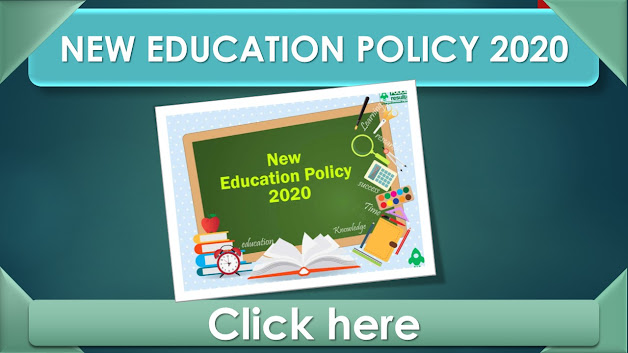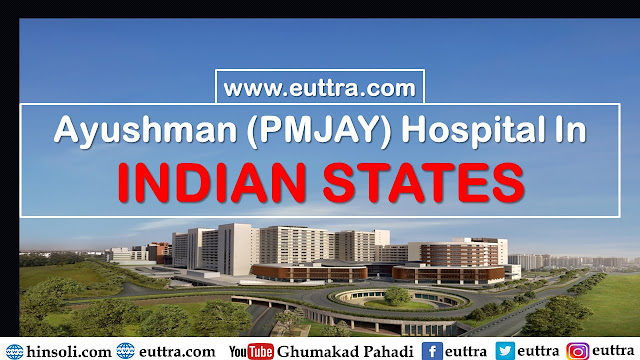Efficient Resourcing and Effective Governance through School Complexes/Clusters
7.1. While the establishment of primary schools in every habitation across the country-driven by the Sarva Shiksha Abhiyan (SSA), now subsumed under the Samagra Shiksha Scheme and other important efforts across the States - has helped to ensure near-universal access to primary schools, it has also led to the development of numerous very small schools. According to U-DISE 2016–17 data, nearly 28% of India’s public primary schools and 14.8% of India ’s upper primary schools have less than 30 students. The average number of students per grade in the elementary schooling system (primary and upper primary, i.e., Grades 1–8) is about 14, with a notable proportion having below 6; during the year 2016–17, there were 1,08,017 single-teacher schools, the majority of them (85743 ) being primary schools serving Grades 1–5.
7.2. These small school sizes have rendered it economically suboptimal and operationally complex to run good schools, in terms of deployment of teachers as well as the provision of critical physical resources. Teachers often teach multiple grades at a time, and teach multiple subjects, including subjects in which they may have no prior background; key areas such as music, arts, and sports are too often simply not taught; and physical resources, such as lab and sports equipment and library books, are simply not available across schools.
7.3. The isolation of small schools also has a negative effect on education and the teaching-learning process. Teachers function best in communities and teams, and so do students. Small schools also present a systemic challenge for governance and management. The geographical dispersion, challenging access conditions, and the very large numbers of schools make it difficult to reach all schools equally. Administrative structures have not been aligned with the increases in the number of school or with the unified structure of the Samagra Shiksha Scheme.
7.4. Although consolidation of schools is an option that is often discussed, it must be carried out very judiciously, and only when it is ensured that there is no impact on access. Such measures are nevertheless likely to result only in limited consolidation, and would not solve the overall structural problem and challenges presented by the large numbers of small schools.
7.5. These challenges will, by 2025, be addressed by State/UT governments by adopting innovative mechanisms to group or rationalize schools. The objective behind this intervention would be to ensure that every school has: (a) adequate number of counsellors/trained social workers and teachers (shared or otherwise) for teaching all subjects including art, music science, sports, languages, vocational subjects, etc; (b) adequate resources (shared or otherwise), such as a library, science labs, computer labs, skill labs, playgrounds, sports equipment and facilities, etc.; (c) a sense of community is built to overcome the isolation of teachers, students, and schools, through joint professional development programmes, sharing of teaching-learning content, joint content development, holding joint activities such as art and science exhibitions, sports meets, quizzes and debates, and fairs; (d) cooperation and support across schools for the education of children with disabilities; and (e) improved governance of the schooling system by devolving all finer decisions, to Principals, teachers, and other stakeholders within each group of schools and treating such a group of schools, which range from the foundational stage through the secondary stage, as an integrated semi-autonomous unit.
7.6. One possible mechanism for accomplishing the above would be the establishment of a grouping structure called the school complex, consisting of one secondary school together with all other schools offering lower grades in its neighbourhood including Anganwadis, in a radius of five to ten kilometers. This suggestion was first made by the Education Commission (1964–66) but was left unimplemented. This Policy strongly endorses the idea of the school complex/cluster, wherever possible. The aim of the school complex/cluster will be greater resource efficiency and more effective functioning, coordination, leadership, governance, and management of schools in the cluster.
7.7. The establishment of school complexes/clusters and the sharing of resources across complexes will have a number of other benefits as a consequence, such as improved support for children with disabilities, more topic-centred clubs and academic/sports/arts/crafts events across school complexes, better incorporation of art, music, language, vocational subjects, physical education, and other subjects in the classroom through the sharing of teachers in these subjects including use of ICT tools to conduct virtual classes, better student support, enrolment, attendance, and performance through the sharing of social workers and counsellors, and School Complex Management Committees (rather than simply School Management Committees) for more robust and improved governance, monitoring, oversight, innovations, and initiatives by local stakeholders. Building such larger communities of schools, school leaders, teachers, students, supporting staff, parents, and local citizens would energize and empower the schooling system, and in a resource-efficient manner.
7.8. The governance of schools will also improve and become far more efficient with school complexes/clusters. First, the DSE will devolve authority to the school complex/cluster, which will act as a semi-autonomous unit. The District Education Officer (DEO) and the Block Education Officers (BEO) will interact primarily with each school complex/cluster as a single unit and facilitate its work. The complex itself will perform certain tasks delegated by the DSE and will deal with the individual schools within it. The school complex/cluster will be given significant autonomy by the DSE to innovate towards providing integrated education and to experiment with pedagogies, curriculum, etc., while adhering to the National Curricular Framework (NCF) and State Curricular Framework (SCF). Under this organization, schools will gain in strength, will be able to exercise greater freedom, and will contribute towards making the complex more innovative and responsive. Meanwhile, the DSE will be able to focus on the aggregate level goals that need to be achieved, improving overall system effectiveness.
7.9. The culture of working to a plan, both short-term and long-term ones, will be developed through such complexes/clusters. Schools will develop their plans (SDPs) with the involvement of their SMCs. These plans will then become the basis for the creation of School Complex/Cluster Development Plans (SCDPs). The SCDP will also involve the plans of all other institutions associated with the school complex, such as vocational education institutions, and will be created by the principals and teachers of the school complex with the involvement of the SCMC and will be made available publicly. The plans will include human resources, learning resources, physical resources and infrastructure, improvement initiatives, financial resources, school culture initiatives, teacher development plans, and educational outcomes. It will detail the efforts to leverage the teachers and students across the school complex to develop vibrant learning communities. The SDP and SCDP will be the primary mechanism to align all stakeholders of the school, including the DSE. The SMC and SCMC will use the SDP and SCDP for oversight of the functioning and direction of the school and will assist in the execution of these plans. The DSE, through its relevant official, e.g., the BEO, will endorse and confirm the SCDP of each school complex. It will then provide the resources (financial, human, physical, etc.) necessary to achieve the SCDPs, both short-term (1-year) and long-term (3-5 years). It will also provide all other relevant support to the school complexes to achieve the educational outcomes. The DSE and the SCERT may share specific norms (e.g., financial, staffing, process) and frameworks for development of the SDP and SCDP with all schools, which may be revised periodically.
7.10. To further enhance cooperation and positive synergy among schools, including between public and private schools, the twinning/pairing of one public school with one private school will be adopted across the country, so that such paired schools may meet/interact with each other, learn from each other, and also share resources, if possible. Best practices of private schools will be documented, shared, and institutionalized in public schools, and vice versa, where possible.
7.11. Every State will be encouraged to strengthen existing or establish “Bal Bhavans” where children of all ages can visit once a week (e.g., on weekends) or more often, as a special daytime boarding school, to partake in art-related, career-related, and play-related activities. Such Bal Bhavans may be incorporated as a part of school complexes/clusters if possible.
7.12. The school should be a point of celebration and honour for the whole community. The dignity of the school as an institution should be restored and important dates, such as the foundation day of the school, will be celebrated along with the community and the list of important alumni may be displayed and honoured. Furthermore, the un-utilized capacity of school infrastructure could be used to promote social, intellectual, and volunteer activities for the community and to promote social cohesion during non-teaching / schooling hours and may be used as a “Samajik Chetna Kendra”.
English Link
- NatNational Education Policy 2020ional
- NEP 2020 ,Part I. SCHOOL EDUCATION
- NEP 2020 ,Part I. Curriculum and Pedagogy in Schools: Learning Should be Holistic, Integrated, Enjoyable, and Engaging
- NEP 2020 ,Part I. Teachers
- NEP 2020 ,Part I, Equitable and Inclusive Education: Learning for All
- NEP 2020 ,Part I, Efficient Resourcing and Effective Governance through School Complexes/Clusters
- NEP 2020 ,Part I, Standard-setting and Accreditation for School Education
- NEP 2020 , Part II, HIGHER EDUCATION
- NEP 2020 , Part II, HIGHER EDUCATION, Institutional Restructuring and Consolidation
- NEP 2020 , Part II, HIGHER EDUCATION, Towards a More Holistic and Multidisciplinary Education
- NEP 2020 , Part II, HIGHER EDUCATION, Optimal Learning Environments and Support for Students
- NEP 2020 , Part II, HIGHER EDUCATION, Motivated, Energized, and Capable Faculty
- NEP 2020 , Part II, HIGHER EDUCATION, Equity and Inclusion in Higher Education
- NEP 2020 , Part II, HIGHER EDUCATION, Teacher Education
- NEP 2020 , Part II, HIGHER EDUCATION, Reimagining Vocational Education
- NEP 2020 , Part II, HIGHER EDUCATION, Catalysing Quality Academic Research in All Fields through a new National Research Foundation
- NEP 2020 , Part II, HIGHER EDUCATION, Transforming the Regulatory System of Higher Education
- NEP 2020 , Part II, HIGHER EDUCATION, Effective Governance and Leadership for Higher Education Institutions
- NEP 2020, Part III, OTHER KEY AREAS OF FOCUS
- NEP 2020, Part III, Adult Education and Lifelong Learning
- NEP 2020, Part III, Promotion of Indian Languages, Arts, and Culture
- NEP 2020, Part III, Technology Use and Integration
- NEP 2020, Part III, Online and Digital Education: Ensuring Equitable Use of Technology
- NEP 2020, Part IV, MAKING IT HAPPEN
हिंदी लिंक
- NatNational Education Policy 2020ional (राष्ट्रीय शिक्षा नीति 2020)
- एनईपी 2020, भाग I। स्कूल शिक्षा
- एनईपी 2020, भाग I। स्कूलों में पाठ्यचर्या और शिक्षाशास्त्र: सीखना समग्र, एकीकृत, आनंददायक और आकर्षक होना चाहिए
- एनईपी 2020, भाग I। शिक्षक
- एनईपी 2020, भाग I, समान और समावेशी शिक्षा: सभी के लिए सीखना
- एनईपी 2020, भाग I, स्कूल परिसरों / समूहों के माध्यम से कुशल संसाधन और प्रभावी शासन
- एनईपी 2020, भाग I, स्कूली शिक्षा के लिए मानक-सेटिंग और प्रत्यायन
- एनईपी 2020, भाग II, उच्च शिक्षा
- एनईपी 2020, भाग II, उच्च शिक्षा, संस्थागत पुनर्गठन और समेकन
- NEP 2020, भाग II, उच्च शिक्षा, एक अधिक समग्र और बहुविषयक शिक्षा की ओर
- एनईपी 2020, भाग II, उच्च शिक्षा, इष्टतम शिक्षण वातावरण और छात्रों के लिए समर्थन
- एनईपी 2020, भाग II, उच्च शिक्षा, प्रेरित, ऊर्जावान और सक्षम संकाय
- NEP 2020, भाग II, उच्च शिक्षा, समानता और उच्च शिक्षा में समावेश
- एनईपी 2020, भाग II, उच्च शिक्षा, शिक्षक शिक्षा
- एनईपी 2020, भाग II, उच्च शिक्षा, व्यावसायिक शिक्षा की पुनर्कल्पना
- एनईपी 2020, भाग II, उच्च शिक्षा, एक नए राष्ट्रीय अनुसंधान फाउंडेशन के माध्यम से सभी क्षेत्रों में गुणवत्तापूर्ण शैक्षणिक अनुसंधान को उत्प्रेरित करना
- NEP 2020, भाग II, उच्च शिक्षा, उच्च शिक्षा की नियामक प्रणाली को बदलना
- NEP 2020, भाग II, उच्च शिक्षा, उच्च शिक्षा संस्थानों के लिए प्रभावी शासन और नेतृत्व
- एनईपी 2020, भाग III, फोकस के अन्य प्रमुख क्षेत्र
- एनईपी 2020, भाग III, प्रौढ़ शिक्षा और आजीवन शिक्षा
- एनईपी 2020, भाग III, भारतीय भाषाओं, कला और संस्कृति को बढ़ावा देना
- एनईपी 2020, भाग III, प्रौद्योगिकी उपयोग और एकीकरण
- एनईपी 2020, भाग III, ऑनलाइन और डिजिटल शिक्षा: प्रौद्योगिकी का समान उपयोग सुनिश्चित करना
- एनईपी 2020, भाग IV, इसे संभव बनाना
अन्य जानकारी
- कंप्यूटर ज्ञान
- जीव विज्ञान
- भौतिक विज्ञान
- रसायन विज्ञान
- भूगोल
- इतिहास
- उत्तराखंड सामान्य ज्ञान
- करंट अफेयर
- भारतीय फौज के बहादुरों की कहानी
- धार्मिक स्थल
- दर्शनीय स्थल
- उत्तराखंड समाचार
- उत्तराखंड की फोटो
- नई शिक्षा निति
- भरतु की ब्वारी के किस्से - नवल खाली
- ACTRESS PHOTO
- UTTRAKHAND PHOTO GALLERY
- UTTRAKHANDI VIDEO
- JOB ALERTS
- FORTS IN INDIA
- THE HINDU NEWS IN HINDI
- उत्तराखंड से सम्बंधित अन्य कोई भी जानकारी (euttra.com)
- Govt Schemes











Follow Us